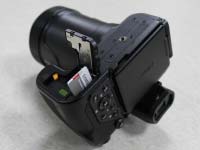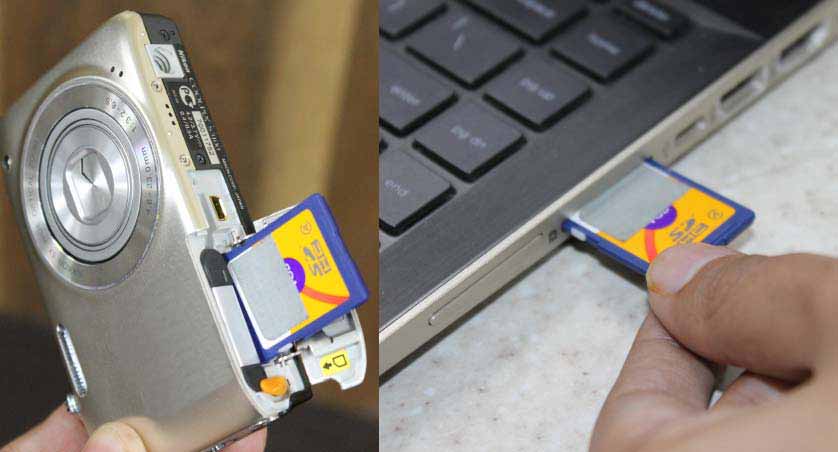Table of Contents
- Windows Data Recovery Software
- NTFS Data Recovery Software
- FAT Data Recovery Software
- Memory Card Data Recovery Software
- Choosing Memory Card Data Recovery Software Types
- Types Of Memory Card Data Recovery Software
- Formatted Memory Card Data Recovery Software
- » Video and Photo Memory Card Data Recovery Software
- iPod Data Recovery Software
- Zune Music Recovery Software
- File system for Windows/Mac
Posted By: Technogeek | Updated On: March 20, 2023
Video Recovery
Losing important videos can be a frustrating experience, but fortunately, there are ways to recover them. Here are some steps you can take to recover deleted or lost videos:

- ➔ Stop Using Your Device: If you have accidentally deleted a video or lost it due to some other reason, it's important to stop using your device immediately to prevent overwriting the data that you want to recover.
- ➔ Check Your Backups: If you have been regularly backing up your videos, check your backup sources such as Google Photos, iCloud, or other cloud services. If the videos are backed up, you can restore them to your device.
- ➔ Use Data Recovery Software: If your videos were not backed up, you can use data recovery software to retrieve them. There are various data recovery tools available for both Windows and Mac, such as EaseUS Data Recovery, Recuva, and Disk Drill. These tools can scan your device's storage for deleted or lost files and recover them.
- ➔ Connect Your Device to Your Computer: To begin the recovery process, connect your device to your computer using a USB cable. Make sure that your device is recognized by your computer and that you have the necessary device drivers installed.
- ➔ Launch the Data Recovery Tool: After connecting your device to your computer, launch the data recovery tool that you have installed. Most data recovery tools have a simple interface that will guide you through the recovery process.
- ➔ Select the Storage Device: Select the storage device on which you want to recover your videos. If you're using a data recovery tool that has a quick scan and deep scan options, select the deep scan option, which will take longer but will have a higher chance of recovering your videos.
- ➔ Scan Your Storage Device: The data recovery tool will then scan your storage device for deleted or lost files. This can take some time depending on the size of your device's storage.
- ➔ Preview and Recover Your Videos: After the scan is complete, the tool will display a list of recoverable files. Select the videos that you want to recover and preview them to confirm that they are the ones you want. Then, click on the Recover button and save the recovered videos to a different location to avoid overwriting any remaining data on your device.
It's important to note that not all videos may be recoverable, especially if they were overwritten or if the storage device was physically damaged. However, following these steps will increase your chances of recovering your lost videos. It's also important to regularly back up your videos to prevent data loss in the future.
Another important consideration is the file format of the videos. Some data recovery tools may not support certain video formats, so it's important to check the compatibility of the software with the format of the video you want to recover. Additionally, if the videos were deleted a long time ago or if the storage device was heavily used, the chances of recovering them may decrease. In such cases, it's recommended to seek the help of a professional data recovery service.

Photos Recovery
Losing precious photos is a nightmare for most people, especially those who value their memories. However, the good news is that photos are recoverable in most cases, provided that you act fast and use the right recovery tools. Here are some steps you can take to recover your lost photos:
- Stop Using the Device: Once you realize that your photos are missing, stop using the device immediately. This will help prevent overwriting of the data that you want to recover, which will make recovery more difficult.
- Check Your Backups: If you have been regularly backing up your photos, check your backup sources such as Google Photos, iCloud, or other cloud services. If the photos are backed up, you can restore them to your device.
- Use Data Recovery Software: If your photos were not backed up, you can use data recovery software to retrieve them. There are various data recovery tools available for both Windows and Mac, such as EaseUS Data Recovery, Recuva, and Disk Drill. These tools can scan your device's storage for deleted or lost files and recover them.
- Connect Your Device to Your Computer: To begin the recovery process, connect your device to your computer using a USB cable. Make sure that your device is recognized by your computer and that you have the necessary device drivers installed.
- Launch the Data Recovery Tool: After connecting your device to your computer, launch the data recovery tool that you have installed. Most data recovery tools have a simple interface that will guide you through the recovery process.
- Select the Storage Device: Select the storage device on which you want to recover your photos. If you're using a data recovery tool that has a quick scan and deep scan options, select the deep scan option, which will take longer but will have a higher chance of recovering your photos.
- Scan Your Storage Device: The data recovery tool will then scan your storage device for deleted or lost files. This can take some time depending on the size of your device's storage.
- Preview and Recover Your Photos: After the scan is complete, the tool will display a list of recoverable files. Select the photos that you want to recover and preview them to confirm that they are the ones you want. Then, click on the Recover button and save the recovered photos to a different location to avoid overwriting any remaining data on your device.
It's important to note that not all photos may be recoverable, especially if they were overwritten or if the storage device was physically damaged. However, following these steps will increase your chances of recovering your lost photos. It's also important to regularly back up your photos to prevent data loss in the future.